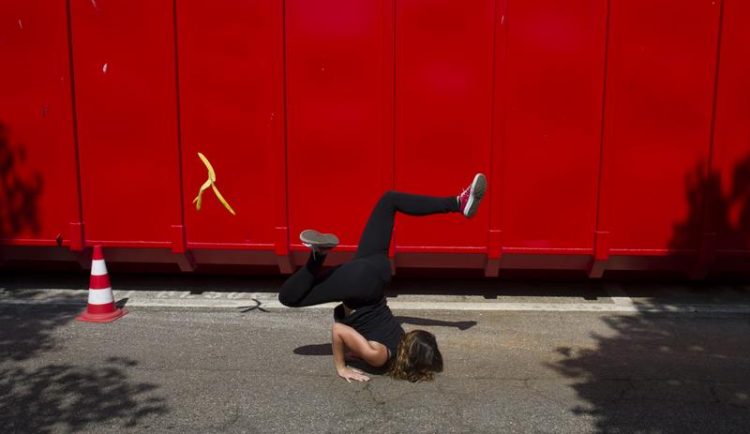Movement control: how our brain responds to unexpected situations

Warning – unexpected sensory feedback can have devastating consequences if not adequately corrected. Image: FMI
In mammals, movement is controlled by circuits spanning throughout the central nervous system from the cortex to the spinal cord. The role of motor cortex in the control of movement is still unclear.
In humans, lesions to motor cortex can result in a loss of voluntary control of movement. Building on the expertise of studying motor circuits and the control of movement of the laboratory of Prof. Silvia Arber (University of Basel/FMI) and the expertise in vivo physiology and cortical processing of the laboratory of Dr. Georg Keller (FMI), the authors teamed up to shed new light on the function of motor cortex.
Movement control in response to unexpected situations
The aim of the study was to test how and under which conditions motor cortex is required for movement control. The authors developed an assay in which they trained mice to navigate a virtual tunnel, a task requiring the adjustment of the heading direction by spontaneous turning on a spherical treadmill.
They also probed the response to unexpected changes in visual feedback that mice had to correct for – for example by suddenly shifting the direction the mouse is running in in the virtual environment. This allowed them to compare the same movements mice executed either spontaneously or as induced by unexpected changes to the visual feedback.
The authors found that motor cortex is only necessary for movement control when movements are executed in response to unexpected sensory feedback.
Specific activity patterns in the motor cortex
Recording neuronal activity in motor cortex as mice corrected for unpredicted sensory perturbations, the authors found that the activity patterns observed during the resultant motor corrections were different from those when the mouse executed the same movement spontaneously. This is consistent with a role of motor cortex in the corrective motor response, where it is required to engage in triggering an appropriate movement in response to the unexpected event.
“We believe that these findings change the way we think about how motor cortex functions from a view that it ‘simply’ controls movement to a role in which motor cortex is needed for sensory-guided control of movement in instances where the sensory processing is also cortically dependent,” says Matthias Heindorf, first author and former PhD student in the Arber and Keller laboratory.
Prof. Dr. Silvia Arber, University of Basel, Biozentrum, Tel. +41 61 207 20 57, E-Mail: silvia.arber@unibas.ch
Dr. Georg Keller, Friedrich Miescher Institute for Biomedical Research, Tel. +41 61 697 82 73, E-Mail: georg.keller@fmi.ch
Matthias Heindorf, Silvia Arber & Georg B. Keller
Mouse motor cortex coordinates the behavioral response to unpredicted sensory feedback
Neuron (2018), doi: 10.1016/j.neuron.2018.07.046
Media Contact
More Information:
http://www.unibas.chAll latest news from the category: Life Sciences and Chemistry
Articles and reports from the Life Sciences and chemistry area deal with applied and basic research into modern biology, chemistry and human medicine.
Valuable information can be found on a range of life sciences fields including bacteriology, biochemistry, bionics, bioinformatics, biophysics, biotechnology, genetics, geobotany, human biology, marine biology, microbiology, molecular biology, cellular biology, zoology, bioinorganic chemistry, microchemistry and environmental chemistry.
Newest articles

A universal framework for spatial biology
SpatialData is a freely accessible tool to unify and integrate data from different omics technologies accounting for spatial information, which can provide holistic insights into health and disease. Biological processes…

How complex biological processes arise
A $20 million grant from the U.S. National Science Foundation (NSF) will support the establishment and operation of the National Synthesis Center for Emergence in the Molecular and Cellular Sciences (NCEMS) at…

Airborne single-photon lidar system achieves high-resolution 3D imaging
Compact, low-power system opens doors for photon-efficient drone and satellite-based environmental monitoring and mapping. Researchers have developed a compact and lightweight single-photon airborne lidar system that can acquire high-resolution 3D…





















